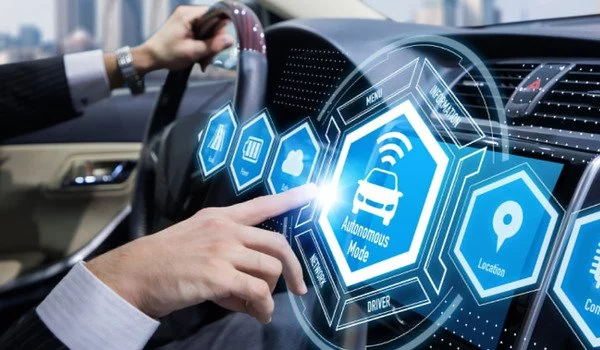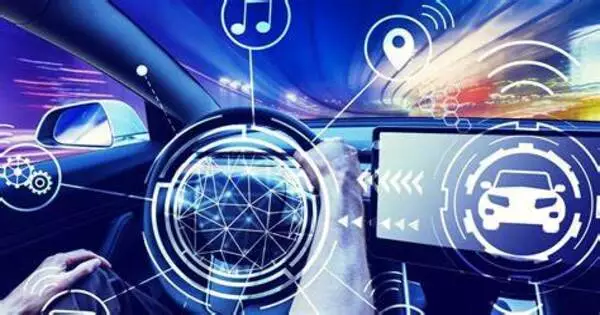When it comes to social intelligence in traffic, self-driving cars, also known as autonomous vehicles (AVs), have obstacles. In this application, social intelligence refers to a vehicle’s ability to understand and interact with human drivers, pedestrians, and cyclists in a safe, efficient, and predictable manner. According to new research, self-driving cars fall short of understanding the social rules in traffic that allow human drivers to decide whether to yield or continue driving.
Should I proceed or yield? It is one of the most basic questions in traffic, whether merging onto a highway or arriving at the metro station. The decision is one that humans normally make quickly and instinctively since it is based on social interactions that we learn from the time we start walking.
Self-driving cars, which are currently on the road in many parts of the world, struggle to navigate these social interactions in traffic. This is demonstrated in recent research from the Department of Computer Science at the University of Copenhagen. Researchers examined a collection of films of self-driving cars in various traffic circumstances posted by YouTube users. The results show that self-driving cars have a particularly tough time understanding when to ‘yield’ – when to give way and when to drive on.
In San Francisco, self-driving cars are causing traffic jams and problems because they react inappropriately to other road users. The city’s media recently reported on a catastrophic traffic event caused by self-driving automobiles due to fog.
Professor Barry Brown
“The ability to navigate in traffic is based on much more than traffic rules. Social interactions, including body language, play a major role when we signal each other in traffic. This is where the programming of self-driving cars still falls short. That is why it is difficult for them to consistently understand when to stop and when someone is stopping for them, which can be both annoying and dangerous,” says Professor Barry Brown, who has studied the evolution of self-driving car road behavior for the past five years.
Sorry, it’s a self-driving car!
Companies such as Waymo and Cruise have introduced self-driving taxi services in portions of the United States. Tesla has sent their FSD model (full self-driving) to about 100,000 volunteer drivers in the United States and Canada. And there are numerous reports in the media about how well self-driving cars perform. However, Professor Brown and his crew claim that their actual road performance is a closely guarded trade secret that only a few people are aware of. As a result, the researchers conducted extensive analysis on 18 hours of YouTube footage taken by enthusiasts evaluating cars from the back seat.

A family of four stands by the curb of a residential street in the United States in one of their video samples. Although there is no pedestrian crossing, the family wishes to cross the road. As the driverless car approaches, it slows, prompting the two adults in the family to wave their hands, indicating that the car may proceed. Instead, the automobile comes to a complete halt right next to them for 11 seconds. Then, as the family begins to walk across the road, the car begins to move again, causing them to leap back onto the sidewalk, at which point the person in the rear seat rolls down the window and exclaims, “Sorry, self-driving car!.”
“The situation is similar to the main problem we found in our analysis and demonstrates the inability of self-driving cars to understand social interactions in traffic. The driverless vehicle stops so as to not hit pedestrians, but ends up driving into them anyway because it doesn’t understand the signals. Besides creating confusion and wasted time in traffic, it can also be downright dangerous,” says Professor Brown.
A drive in foggy Frisco
The performance of self-driving cars may be evaluated up close in tech-centric San Francisco. In some parts of the city, autonomous cars have been released as buses and taxis, navigating the hilly streets among people and other natural phenomena. And, according to the researcher, this has generated a great deal of opposition among the city’s residents:
“In San Francisco, self-driving cars are causing traffic jams and problems because they react inappropriately to other road users. The city’s media recently reported on a catastrophic traffic event caused by self-driving automobiles due to fog. Despite the fact that fog is extremely common in the city, the self-driving cars overreacted, stopping and blocking traffic,” explains Professor Brown.
Robotic cars have been in the works for 10 years and the industry behind them has spent over DKK 40 billion to push their development. Yet the outcome has been cars that still drive with many mistakes, blocking other drivers and disrupting the smooth flow of traffic.
Why do you think it’s so difficult to program self-driving cars to understand social interactions in traffic?
“I believe part of the answer is that we take the social component for granted.” We don’t think about it when we get in our cars and drive; we just do it. When developing systems, however, you must define what we take for granted and incorporate it into the design. The automobile industry could benefit from a more sociological perspective. Understanding social interactions in traffic should be utilized to develop interactions between self-driving cars and other road users, similar to how research has helped enhance the usability of mobile phones and technology more widely.”
















